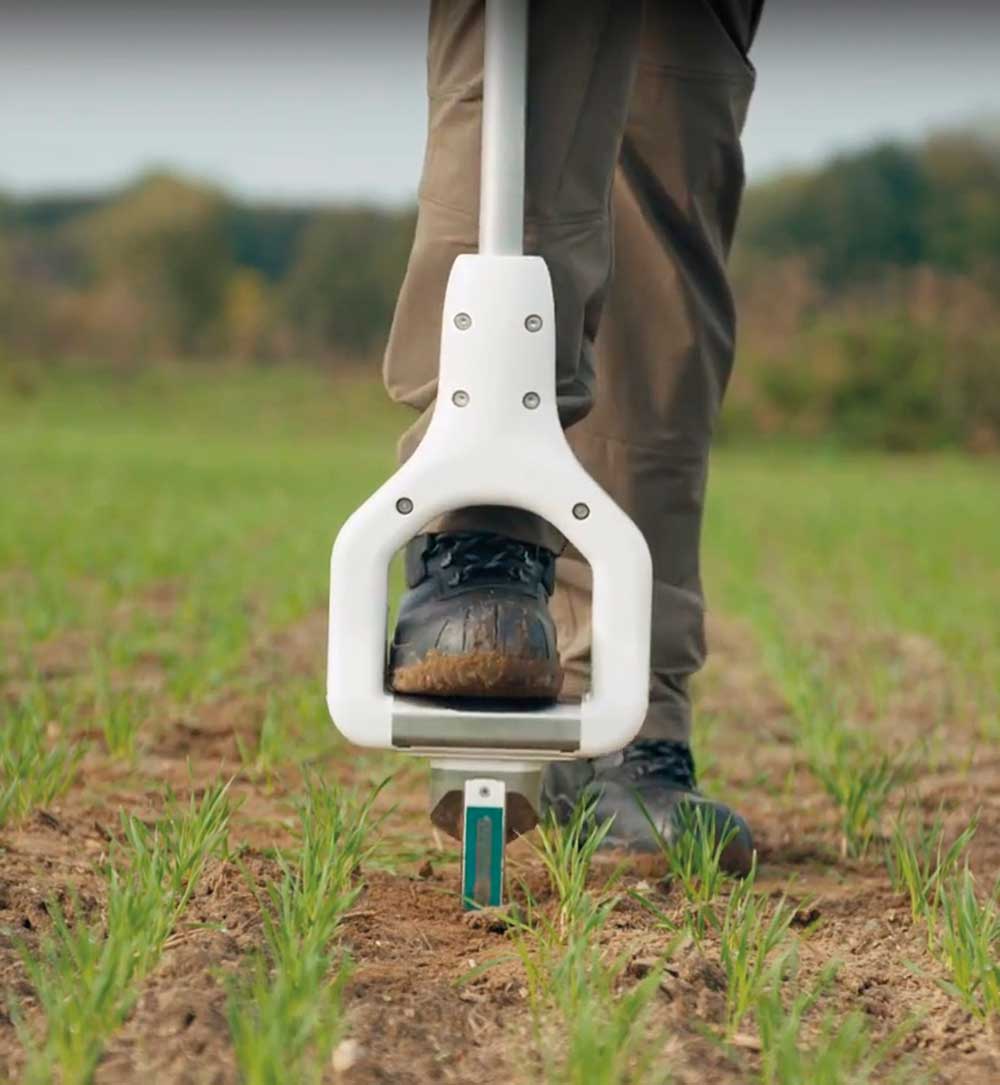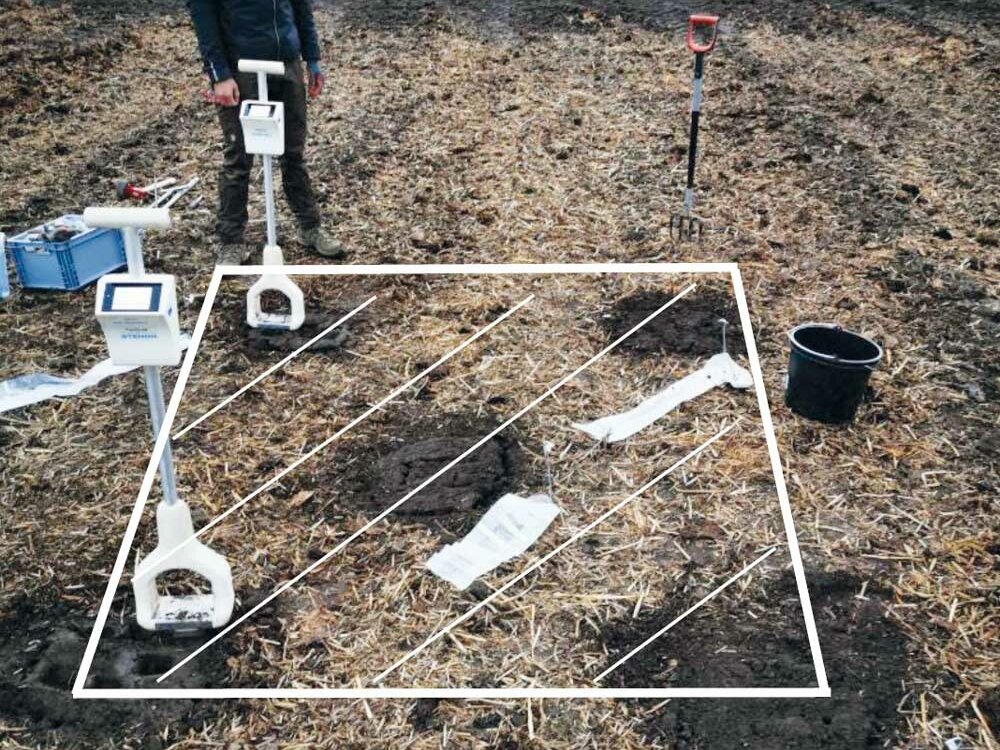Stenon FarmLab: Spade analysis of soil samples
By Dr Frank Volz, DLG Test Center Technology and Farm Inputs
How, if not by means of a soil test, is it possible to detect nutrient deficiencies or surpluses in arable farming and thus ensure the optimum supply of nutrients to the crops while at the same time minimising the input of inputs? Regardless of whether you are located in the "red zone", have your farm in a region with extensive animal husbandry or farm without animals or even in very close crop rotations: Only those who know and have documented the nutrient status of their soil have the decisive information for fertiliser selection and the certainty that they will not stumble over one of the many cross-compliance pitfalls. Soil samples are therefore usually taken at regular intervals and chemically analysed in the laboratory. In the course of sampling, for example, lime requirements (pH value), phosphorus, potassium and magnesium contents, micronutrients such as manganese, boron, copper and zinc, humus content, the supply of nitrate and mineral nitrogen and sulphur (Nmin and Smin) to the soil can be determined. The above-mentioned soil analyses are highly standardised serial tests and are often offered as complete services from sampling to transmission of results.
Soil values in seconds
The manufacturer Stenon promises particularly fast results to customers who opt for the Stenon FarmLab system. The manufacturer sees advantages in up-to-date data on soil condition especially in short harvest cycles, i.e. in the short time between harvest and reseeding, which is particularly crucial for nutrient and water management. The Stenon FarmLab is an integrated hardware and software solution for real-time soil analysis. The system promises to allow farmers to measure many important parameters directly in the field, eliminating the need to send soil samples to external laboratories and the sometimes lengthy wait for results. Instead, farmers can simply stick the device's measuring head with its various optical (e.g. NIR) and electrical sensors into the soil. The sensor unit collects the parameters directly during contact with the soil, in addition the climate sensors built into the control unit determine the weather data and an integrated GPS module determines and documents the sample location. The data is transmitted to the internet, software evaluates the data on the system's own cloud servers and presents the results in a practical and easy-to-understand way in a web app.
Accuracy and reliability are decisive
Speed is good and brings advantages, but it must not be at the expense of accuracy. The Fertiliser Ordinance requires, among other things, a determination of the amounts of nitrogen available in the soil before applying significant amounts of nutrients, but at least annually. Although these can be taken from publications or simulated, analyses of one's own representative soil samples are much more accurate. Against this background, the prediction accuracy of the system for the soil parameters NO3 content, Nmin content and soil moisture was determined in the DLG test of the Stenon FarmLab. The prediction accuracies were calculated in the test for each individual soil parameter by comparing sensor values with the results from laboratory analyses of five laboratories and subjected to an evaluation according to the current DLG evaluation scheme. In total, measurement plots with five subplots each were defined on 40 practice plots, from which measurements were carried out with two soil sensors each and soil samples were taken according to a given pattern. For the evaluation, practice-relevant result classes were defined for each parameter, into which both the soil sensor values and the laboratory mean values were classified.
Conclusion
The soil sensor "Stenon FarmLab" with the software version d-1.3.0 and the calibration model p-2.1.0 fulfilled the DLG requirements for the prediction accuracy of sensors for mobile soil analysis for the parameters NO3 content, Nmin content and soil moisture in the DLG test. In addition, it was also tested whether operating errors were detected by the device and whether corresponding indications and warning messages were issued.
After the NIR soil sensors, the toolbox of the arable farming practitioner can be expanded by another tool with the Stenon FarmLab. The great advantage here is the short-term availability of current values for a whole range of soil parameters. For the three parameters tested in the first step, NO3 content, Nmin content and soil moisture, the device was able to meet the requirements defined by the DLG experts for prediction accuracy and reliable function. Further details can be found in the test report, which is available free of charge at www.DLG.org.





